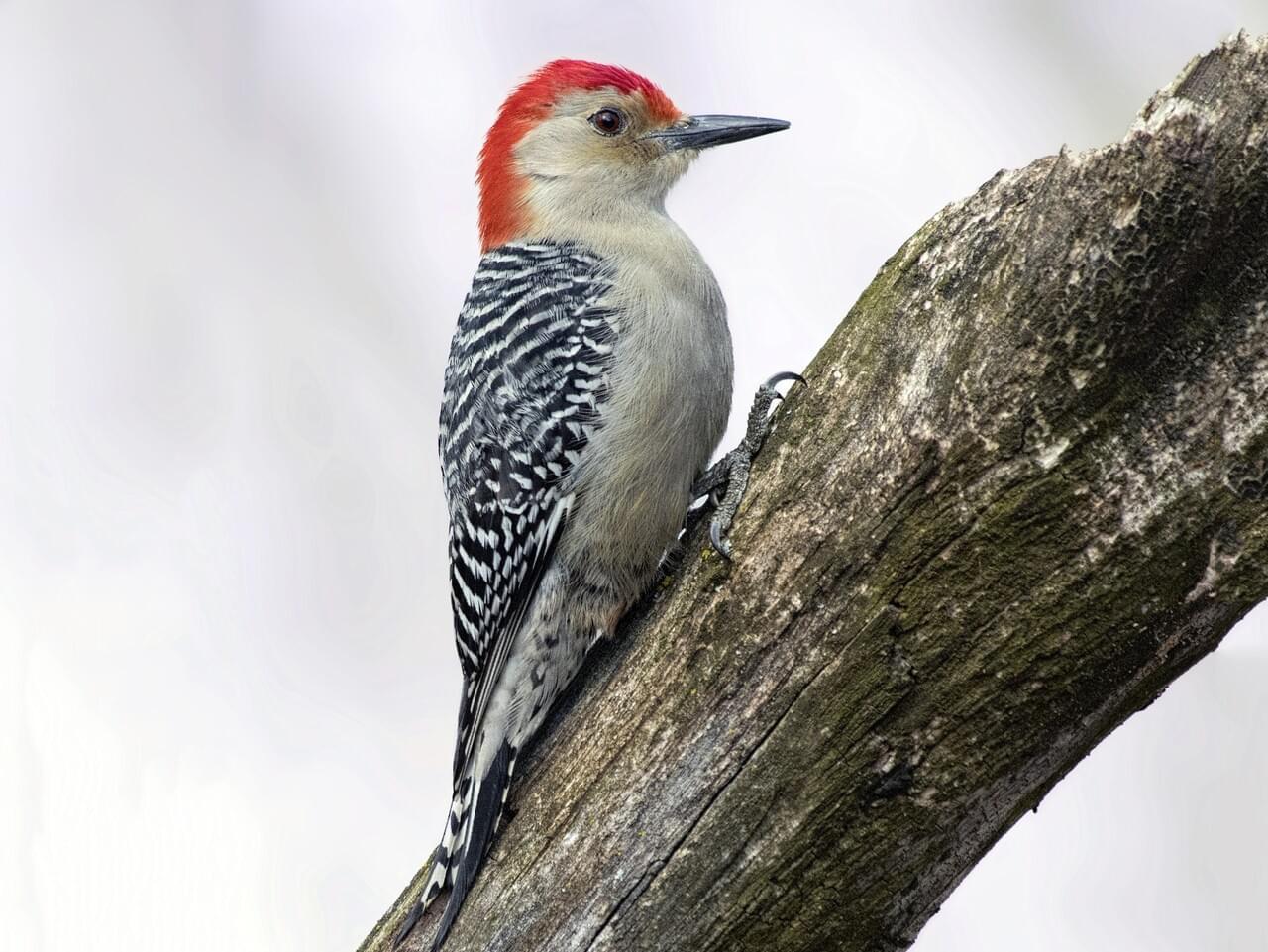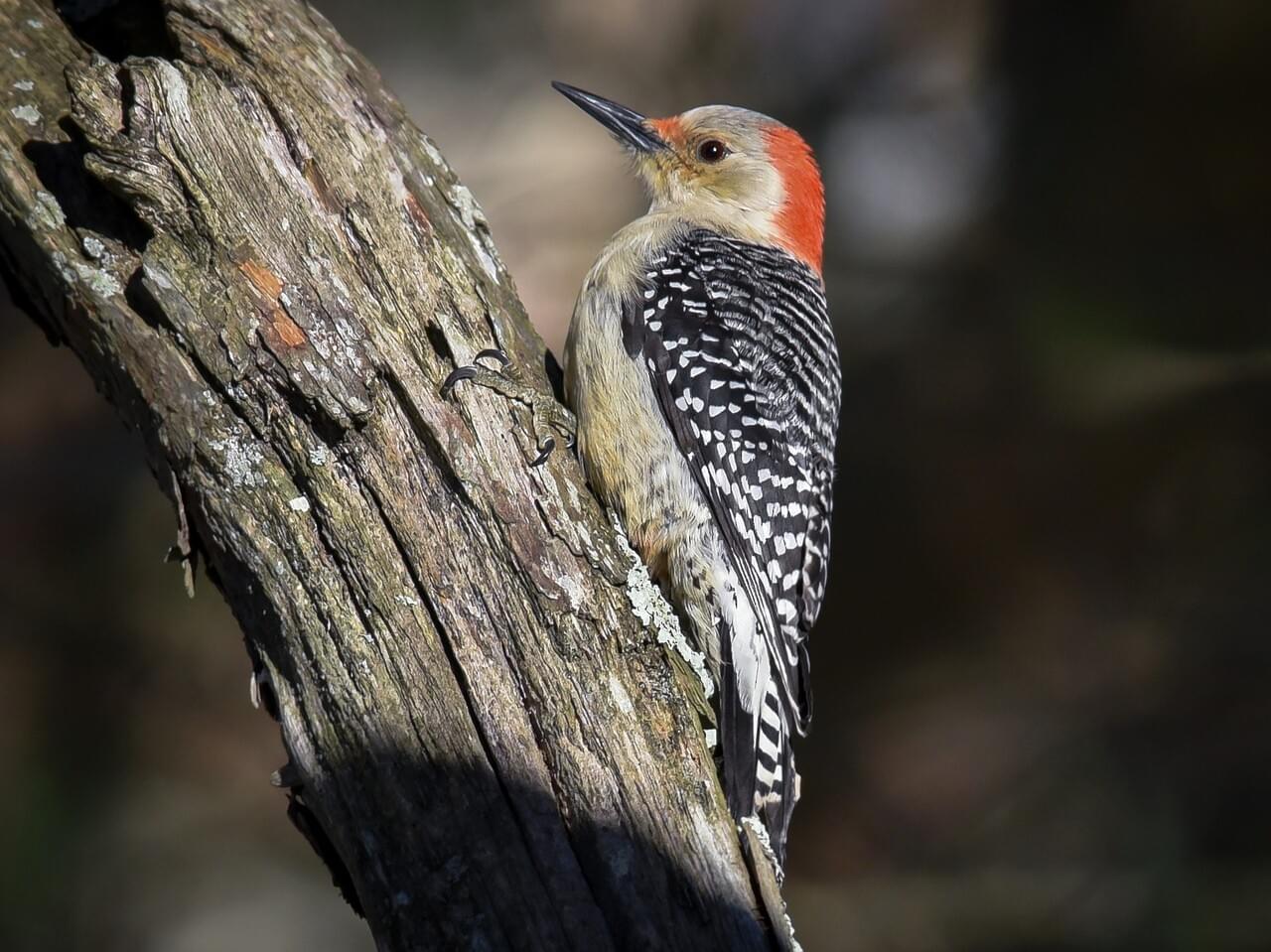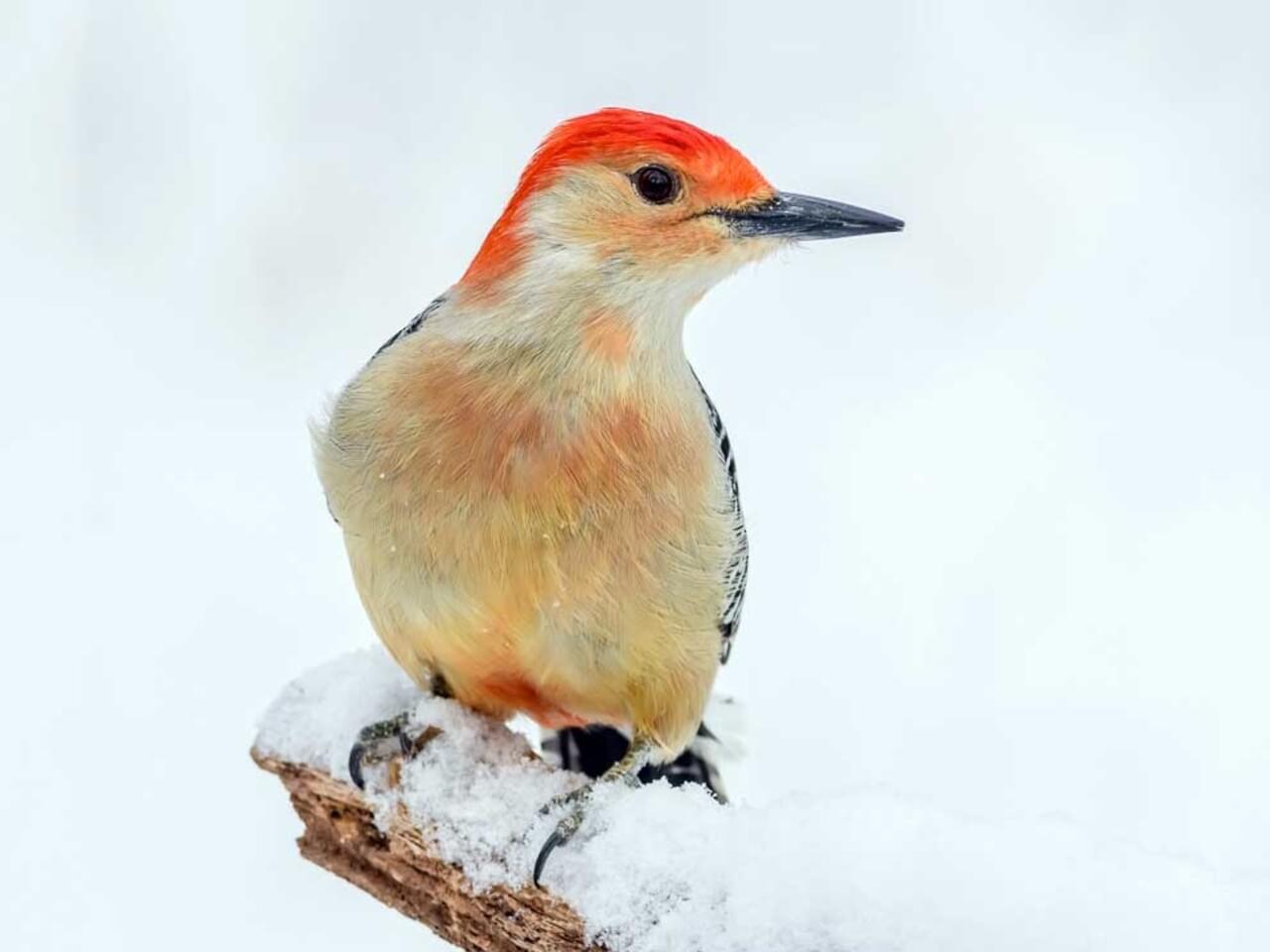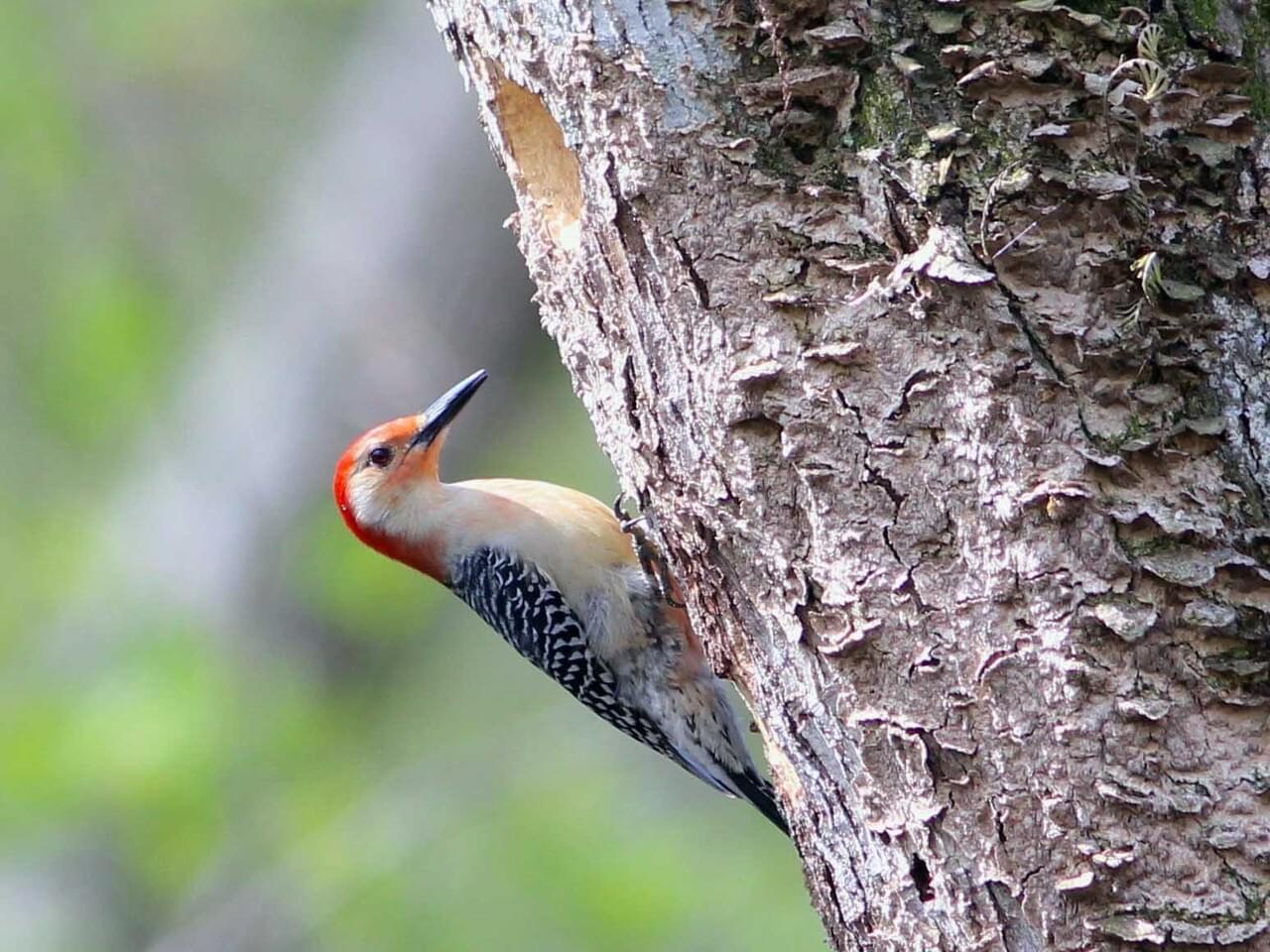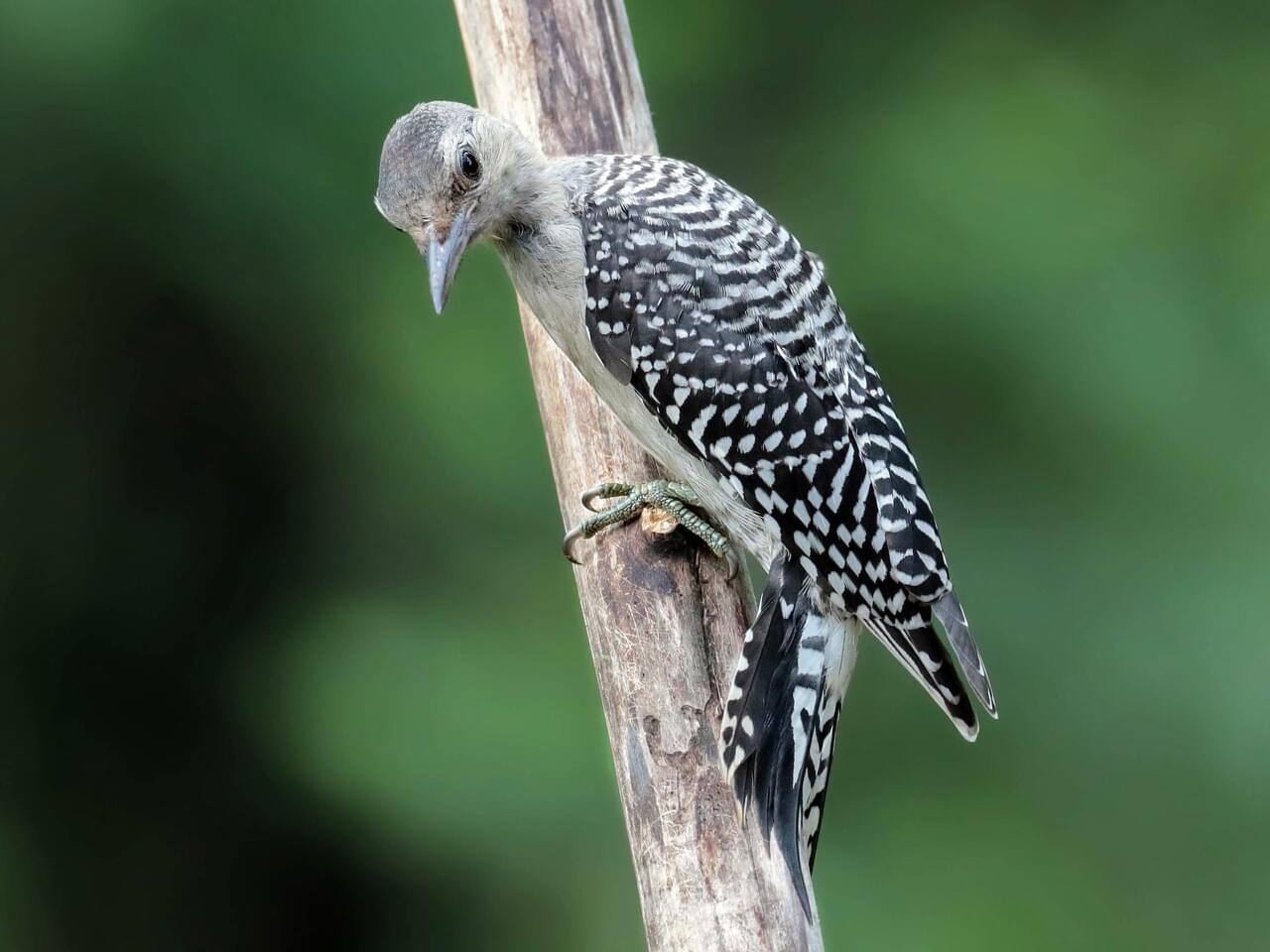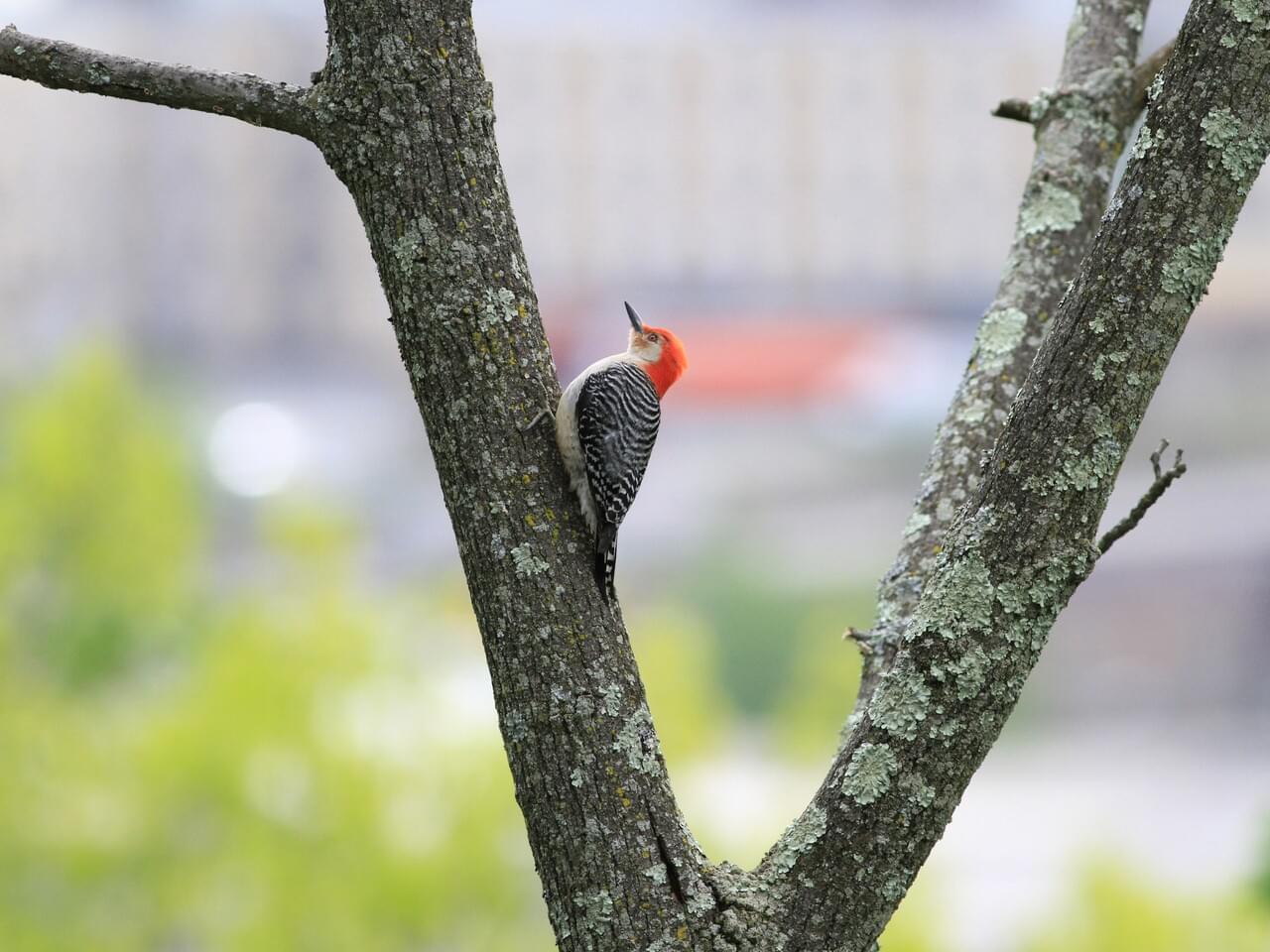 Photo ©
Kenneth Cole Schneider
Photo ©
Kenneth Cole Schneider
Red-bellied Woodpecker
Regional Species
Red-bellied Woodpeckers are pale, medium-sized woodpeckers common in forests of the East. Their strikingly barred backs and gleaming red caps make them an unforgettable sight – just resist the temptation to call them Red-headed Woodpeckers, a somewhat rarer species that's mostly black on the back with big white wing patches. Learn the Red-bellied's rolling call and you’ll notice these birds everywhere.
Range
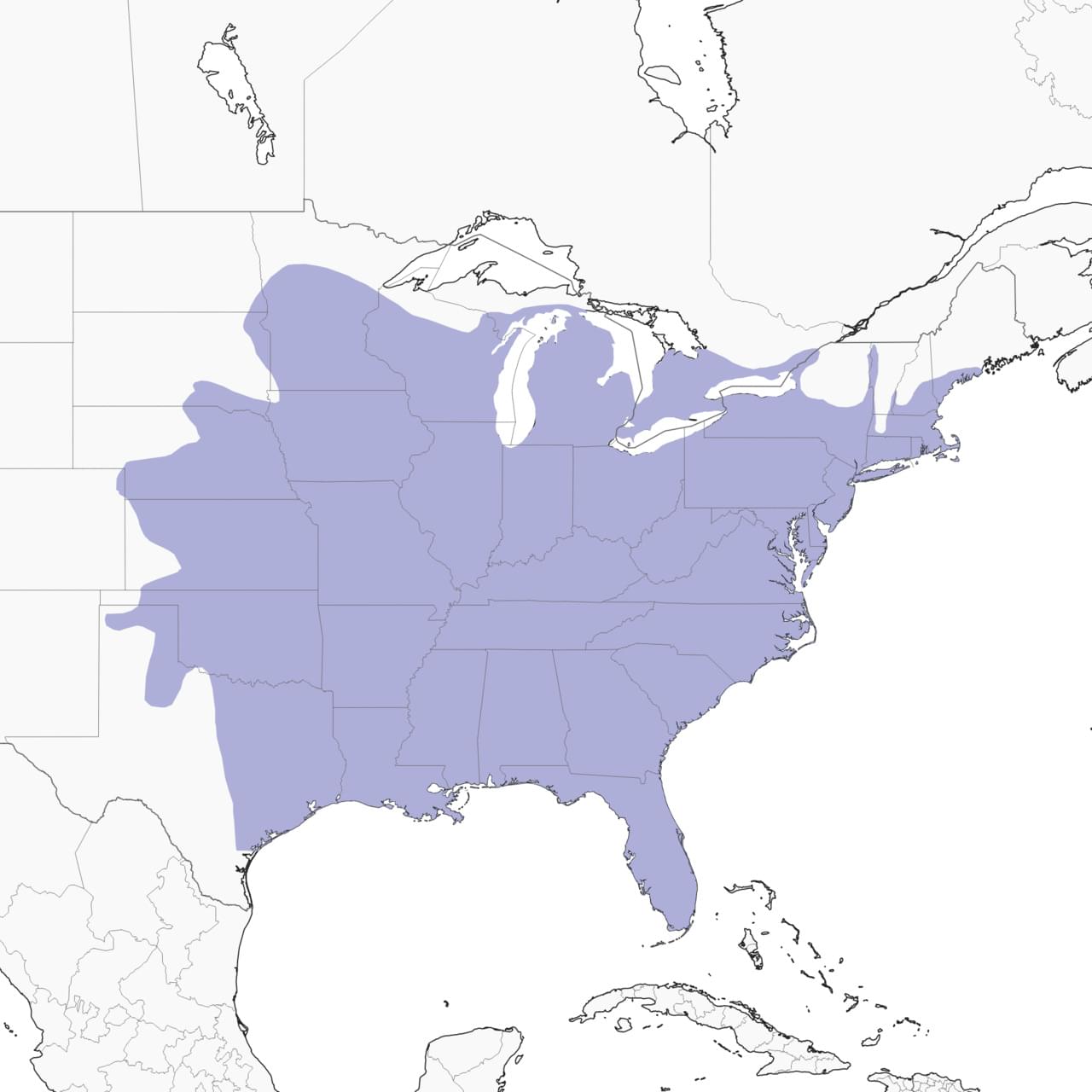
Habitat
You can find this species across most of the forests, woodlands, and wooded suburbs of the eastern United States, including oak-hickory forest, pine-hardwood forest, maple and tulip-poplar stands, and pine flatwoods. It’s a bit more common in river bottoms and wetlands, in the south of its range, and at elevations below about 2,000 feet.
Food
Though this bird mainly eats insects, spiders, and other arthropods, it eats plenty of plant material, too. In particular, acorns, nuts, and pine cones, as well as seeds extracted from annual and perennial plants and (particularly in fall and winter) fruits ranging from grapes and hackberries to oranges and mangoes. Occasionally eats lizards, nestling birds, even minnows.
Behavior
These birds often stick to main branches and trunks of trees, where they hitch in classic woodpecker fashion, leaning away from the trunk and onto their stiff tail feathers as they search for food hiding in bark crevices. When nesting, males choose the site and begin to excavate, then try to attract a female by calling and tapping softly on the wood around or in the cavity. When a female accepts, she taps along with the male, then helps put the finishing touches on the nest cavity. At feeders, Red-bellied Woodpeckers will push aside most bird species other than Blue Jays.
Nesting
Red-bellied Woodpeckers lay their eggs on the bed of wood chips left over after excavating their nest cavity. Nest holes are 22 to 32 centimeters deep, with a cylindrical living space of roughly 9 by 13 centimeters.
Appearance
Typical Sound

© Jay McGowan / Macaulay Library
Size & Shape
A sleek, round-headed woodpecker, about the same size as a Hairy Woodpecker but without the blocky outlines.
Color Pattern
Often appears pale overall, even the boldly black-and-white striped back, with flashing red cap and nape. Look for white patches near the wingtips as this bird flies.
Plumage Photos
Similar Species
The Golden-fronted Woodpecker of south Texas has yellow on the forehead and back of the neck. The Red-headed Woodpecker has an all-red head and neck, black back, and large white patches on the wing. Ladder-backed Woodpecker of Texas and the Southwest is smaller, with a black-and-white striped head and barred flanks. Northern Flickers have brown-and-black barred backs (not black-and-white) and are spotted below, with a black crescent on the chest. Hairy and Downy woodpeckers have a long white stripe down the middle of the back.
Did you know?!
- You may sometimes see Red-bellied Woodpeckers wedge large nuts into bark crevices, then whack them into manageable pieces using their beaks. They also use cracks in trees and fence posts to store food for later in the year, a habit it shares with other woodpeckers in its genus..
- For birds that nest in cavities, nest holes are precious turf. Red-bellied Woodpeckers have been known to take over the nests of other birds, including the much smaller (and endangered) Red-cockaded Woodpecker. But more often they’re victims to the aggressive European Starling. As many as half of all Red-bellied Woodpecker nests in some areas get invaded by starlings.
- You may occasionally see a Red-bellied Woodpecker flying quickly and erratically through the forest, abruptly changing direction, alighting for an instant and immediately taking off again, keeping up a quick chatter of calls. Scientists categorize this odd behavior as a type of play that probably helps young birds practice the evasive action they may one day need.
